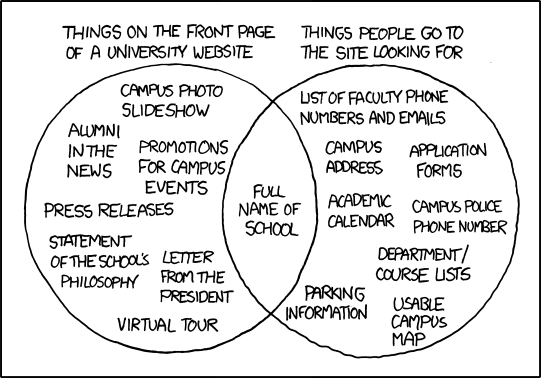 Your university's Web site is often the first point of contact that potential students have with you: two-thirds of students say that the Web is their primary tool for deciding where to study. Andrew Crisp, cofounder of Carrington Crisp, spoke at an overflowing session about the importance of thinking of your organization as a brand. A message from the dean is often not what students are looking for when they first come to your site.
Your university's Web site is often the first point of contact that potential students have with you: two-thirds of students say that the Web is their primary tool for deciding where to study. Andrew Crisp, cofounder of Carrington Crisp, spoke at an overflowing session about the importance of thinking of your organization as a brand. A message from the dean is often not what students are looking for when they first come to your site.
The Wednesday afternoon session, The Power of Marketing: Standing Out in the Crowded e-World and Beyond, covered many of the key features of an effective Web site. Andrew Crisp stressed that schools need to remember their audience when creating their site, and provide the information that matters the most to the audience. He cited the top three things that students look for:
- What courses can I take?
- What will this university cost me?
- What will going to this university do for my career?
In addition to providing these types of information easily from the home page, Crisp encouraged the audience to use meaningful copy and to avoid jargon. "Content is king--so find something useful to say," Crisp suggested.
It can be helpful to involve students in your messaging: student blogs and student videos uploaded to sites like YouTube can help to portray your university from a point of view similar to that of your prospective students. Promoting your school on a Facebook page can provide another opportunity to reach teenagers where they already are.
Looking forward you should plan for ways like this to go beyond the university Web site. Mobile apps, web content on television, and many other new forms of social media will provide fresh chances to connect with students.
